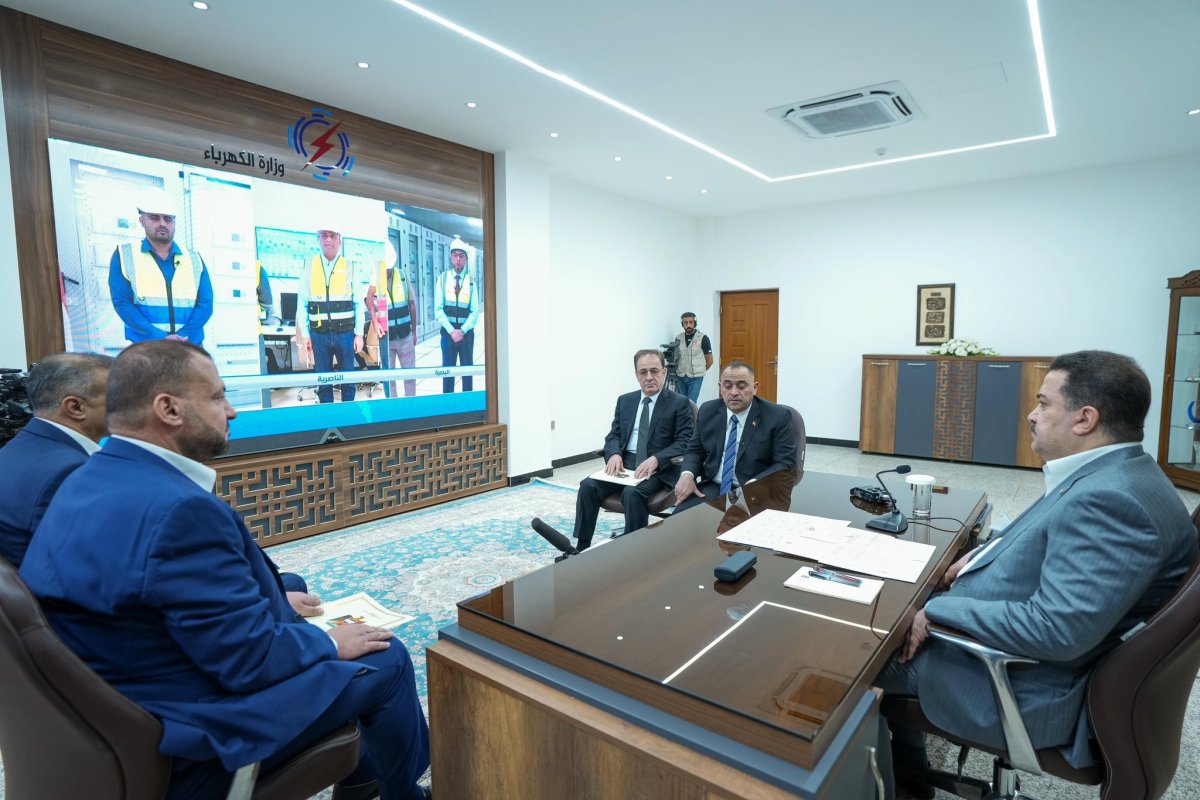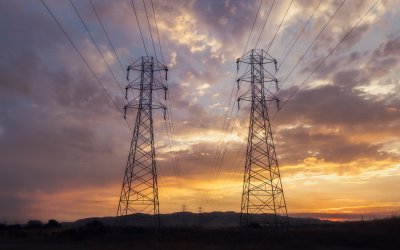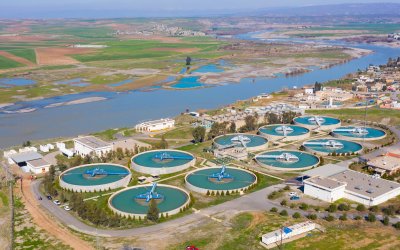Introduction
The Kurdistan region of Iraq (KRI) has struggled with electricity shortages for decades. To address this challenge, the Kurdistan Regional Government (KRG) established the Runaki Project, which means “light” in Kurdish. Launched in 2024, it aims to manage the region’s power sector systematically and ensure 24-hour electricity for households and businesses by the end of 2026. If successful, it could ultimately end the widespread reliance on highly polluting diesel generators and replace them with supply from natural gas-power plants [1].
If successful, it could ultimately end the widespread reliance on highly polluting diesel generators and replace them with supply from natural gas-power plants.
However, there are serious societal concerns around the costs for consumers associated with the new system, which presents a major challenge to the project’s long-term success. Thisreport analyzes the Runaki Project and positions it as a potential structural response to the KRG’s endemic electricity shortages. It examines the underlying incentives and institutional constraints that might shape the project’s design and implementation. It further identifies the winners and losers of Runaki and elaborates on the fiscal, political, and distributional challenges that will influence its outcomes and sustainability.
H.E. Prime Minister Mohammed Shia Sudani during a recent visit to Iraq’s Ministry of Electricity. (Source: Prime Minister Media Office)
The KRI’s Power Deficits
The Runaki Project is designed to address the longstanding mismanagement of the electricity sector in the KRI. Before the program launched, the KRG purchased electricity from private producers at high generation costs and sold it to consumers at heavily subsidized rates, often without successfully collecting on consumer bills. Because the KRG was unable to achieve cost recovery in the power sector, it could not cover the fees and feedstock costs of the private power plants that supplied the national grid. As a result, it accumulated more than 4 billion USD in arrears to these private power producers through 2021. This accounted for more than one-third of the KRG’s total annual estimated expenditures. In addition to unsustainable costs for the government, electricity coverage was poor [2]. Figure 1 shows the pervasive mismatch between electricity demand and supply both during peak demand times—in hot summer and cold winter—and in moderate seasons.
The endemic supply shortages are both a result of and a cause for the KRI’s under-developed power sector and bill-collecting capacity. According to KRG Minister of Electricity Kamal Mohammed, the total power production on the national grid in May 2025 totaled between 4,000 megawatts (MW) and 4,500 MW . However, the power plants in the KRI have the technical capacity and infrastructure to produce up to 8,189 MW[3]. Underproduction is largely due to insufficient feedstock, in this case natural gas. As a result, private power-producers cannot meet overall demand [4]. Because the KRG cannot afford to buy all of what is generated, the companies exported some of their produced electricity—more than 1,000 MW—to Iraqi governorates outside the KRI including Kirkuk, Nineveh, and Diyala [5].
The power sector in the KRI is mismanaged in two important ways. First, many consumers either underpay or do not pay at all for national grid electricity. Second, they pay for very expensive diesel generators that supply only a short period of daytime electricity to fill in the gaps left by insufficient national grid supply. The International Monetary Fund (IMF) estimated distribution and bill collecting losses in 2024 at 55 percent across Iraq as a whole [6]. If properly implemented, Runaki would theoretically address these issues by improving bill collection and achieving some degree of cost recovery through carefully calibrated subsidies targeting low-income consumers.
Additionally, the environmental impact of power sector mismanagement is equally as harmful as the financial costs. Diesel generators located in residential neighborhoods and business districts emit large quantities of carbon dioxide (CO₂), nitrogen oxides (NOx), sulfur dioxide (SO₂), carbon monoxide (CO), and particulate matter (PM2.5) [7]. While Runaki does not phase out electricity generated by fossil fuels, it will significantly reduce emissions by shifting generation from diesel to natural gas and move emissions of other harmful byproducts to less-populated areas. It also offers public health benefits by eliminating the noise pollution made by the generators.
Figure 1 demonstrates electricity supply and demand ranges during moderate and peak demand seasons in the KRI
Source: The supply demand figures are collected by the author from various sources [8].
How Runaki Works
Runaki focuses on managing electricity consumption through the use of smart meters, which digitalize electricity bill collection. This system enables real-time monitoring of electricity usage and allows consumers to track their consumption and adjust their usage patterns accordingly. It replaces the previous flat-rate system with a tiered billing structure that incentivizes efficient energy consumption. In sum, Runaki achieves 24-hour electricity by lowering overall demand by imposing higher costs for higher consumption.
Most households have historically purchased a large portion of their electricity from private generator operators. According to KRG officials, the project aims to provide reliable electricity for low- and middle-income households who typically consume less than 800 Watt-hours (Wh) per month, which replaces the combination of subsidized grid electricity and diesel generators. As of July 2025, 2 million residents reportedly benefit from 24-hour electricity, mostly in the centers of the major cities [9]. The KRG’s goal is to extend this to all of the KRI’s 6.4 million residents by the end of 2026. So far, 1,260 of the KRI’s estimated 7,354 diesel generators have been shut down as part of the program, according to officials [10].
Figure 2 illustrates the progressive electricity pricing for households/business entities
Source: The data in the Figure 2 is taken from the KRG’s website [11].
As Figure 2 shows, the prices for households are progressively structured to charge more for higher consumption, ranging from 72 IQD (USD)/kWh for low usage and up to 350 IQD (USD)/kWh for high usage. For business entities, rates vary based on sector: enterprises in agriculture pay 60 IQD/kWh, heavy industry pays 125 IQD/kWh, manufacturing pays 160 IQD/kWh, and general business pays 185 IQD/kWh. According to some KRG estimates, 64% of households currently fall within the first two tiers of the progressive pricing by consuming no more than 800 kWh/month; [12] however, these estimates have yet to be independently verified.
Concerns about Financial Burdens
Consumers are used to paying either just 18 IQD/kWh under the previous system for national grid electricity or getting it for free by dodging their bill entirely. The burden these new costs place on ordinary families is significant. Almost all the opposition parties, which collectively hold more than 27% of the seats in the Kurdistan Parliament, have publicly rejected the proposed tariff model. Instead, they want to maintain the current semi-flat rates or provide extensive subsidies for low-income households. Adnan Said Hussein, an MP from the New Generation Movement in the Kurdistan Parliament, said in a statement: "For households who would have to buy electricity at 350 IQD per kWh, they would end up paying 19 times more than what they currently pay under the existing system. This is unbearable. Civil servants, who already lose the equivalent of about two months’ salaries each year due to the corruption of the ruling elite, simply cannot afford this?" [13].
Unless the KRG clearly explains and implements relief for low-income households, the new system will effectively entail a massive shifting of the cost of electricity from the government to the people.
Thus, the financial sustainability of subsidies represent a delicate balancing act, given outspoken opposition and the KRG’s budget constraints. Even if Runaki represents a necessary step forward in the KRI’s electricity sector, it faces significant implementation challenges and the most visible one is political polarization related to the project. The KRG insists that the government will find ways to alleviate the financial burden for consumers, particularly for low-income families, but details on the scale and nature of this relief have been very scarce. Authorities have an obligation to clarify these measures and to implement them urgently. Otherwise, the new system will effectively entail a massive shifting of the cost of electricity from the government to the people, with the most vulnerable citizens suffering disproportionately.
Potential Benefits
If the government succeeds in alleviating the burdens placed on vulnerable citizens, Runaki could have far-reaching implications for a wide range of stakeholders with substantial benefits for households and businesses. Small and medium enterprises (SMEs) and service providers could enjoy more reliable electricity supply, operate more efficiently, minimize costly downtime, and improve their competitiveness. Lower energy costs compared with the diesel generators supports better financial sustainability and growth.
Secondly, for the broader population, Runaki is expected to generate significant environmental benefits by replacing diesel generators with natural gas power plants. "The main source of pollution in Kurdistan is certainly these diesel generators, followed by cars. Once these generators are shut down, we will eliminate a big source of the polluting particles and cancer-causing substances produced by diesel, in addition to getting rid of their constant noise." Said Yerivan Shaswar, an academic and environmental activist who works on air pollution in the KRI [14].
If KRG authorities can clarify and effectively implement subsidies for vulnerable citizens, Runaki’s substantial public benefits should help build popular support and sustain momentum.
Results of a survey from the Kurdistan Region Statistics Office (KRSO) shows the generators consume about 444 million liters of diesel per month during peak times [15]. A diesel generator emits approximately 1.27 kg CO₂ per kWh of electricity produced [16], while natural gas power plants emit approximately 0.49 kg CO₂ per kWh [17]. Moreover, some fuel products consumed by the generators in the KRI are mixed with lead, making it even more harmful to public health than standard fuel [18]. In total, Runaki is expected to reduce the KRI’s CO₂ per kWh by at least 61 percent.
Third, for the KRG, the project could strengthen the government’s fiscal and governance position. It reduces fiscal pressures by phasing out costly fuel subsidies resulting from unpaid bills and electricity theft. The KRG used to pay more than 2.6 trillion IQD (about 2 billion USD) per year to the private electricity producers that supply the KRI’s grid, while it collected about 0.6 trillion IQD (about 462 million USD) [19]. Runaki is expected to address this issue by enhancing bill collection and implementing more systematic power consumption.
Employment and Market Impacts
The consequences for employment may be negative in the short-term. Runaki will put 7,746 people employed in the diesel generator sector out of work [20]. Monthly income for generators during peak demand reached IQD 274 million, according to the KRSO [21]. Estimates from the Union of Generator Owners found that approximately 28,500 people relied on 5,700 generators for their livelihoods, including owners, operators, bill collectors, and technicians [22]. These people have created a politically sensitive sector dominated by powerful local actors who have resisted past attempts to reform the power sector. They managed to create popular pressure in 2018 to disrupt reform attempts in Baghdad and southern Iraq [23]. Similar pressure to scuttle the Runaki project also occurred in the KRI during 2024 [24].
Runaki also affects fuel producers and traders. As demand for private generators declines, the market for diesel fuel will shrink dramatically. The diesel generators consume about 444 million liters of diesel on a monthly basis during peak periods [25]. Lower fuel sales threaten a historically lucrative sector and the livelihoods of those involved in refining, fuel distribution, and oil products trade. Ako Essa, one of the fuel traders and owner of a small topping plant that produces a specific type of diesel mainly used by generators, said: "We used to supply 124 diesel generators in Erbil until last winter. Now, only 26 of them remain operational, and very soon we will lose the rest. This has substantially affected our diesel sales"[26]. Consequently, the elites tied to the generator economy will see their influence diminish and control over electricity access and revenues will shift to the government.
Risk Management & Policy Responses
While Runaki promises cleaner and more reliable energy for the KRI, its success depends on effectively managing a range of political, technical, and social risks. The KRI’s exhausted grid infrastructure will pose consequent challenges. As demand rises with the shift away from diesel generators, the existing infrastructure may struggle to deliver consistent power. Transmission inefficiencies, inadequate maintenance, and widespread illegal connections currently undermine system reliability, reduce revenue collection, and exacerbate disparities in electricity access. Some performance tests showed that the Runaki Project is expected to reduce both technical and non-technical losses. Technical losses are projected to fall within a standard range—below 15%, and electricity theft is also expected to decline between 10% and 15% from previously estimated levels of around 40% [27].
To mitigate the risk of public resistance to the new pricing model, the introduction of targeted subsidies for low-consumption tiers can protect low-income households from sudden price shocks. Complementing this with phased tariff adjustments, rather than abrupt increases, can ease the transition and reduce the likelihood of backlash, enhancing the project’s long-term sustainability.
The 28,500 individuals—generator-owners, operators, bill collectors, and technicians—who will lose their livelihoods as a result of Runaki’s introduction remain an active aggrieved social group that could oppose the project unless properly compensated. The KRG has kept the shut-down generators in place and pledged to pay 1.5 million IQD per generator until Runaki is fully operational. However, these payments have been inconsistent, prompting many to sell their generators to operators in other parts of Iraq rather than waiting to see if Runaki succeeds [28].
Expecting a large segment of the KRI’s population to change their behaviors overnight remains an understudied aspect of the Runaki Project.
Moreover, to ensure better communication, the KRG needs to continue its awareness campaign to explain the benefits of the project (e.g., 24-hour power, reduced noise and air pollution, and improved public health). This should be associated with tips for efficient electricity use, better management, and on-time bill payment. Shamal Karim, a construction worker, said that low-income consumers like him are unable to pay for national grid electricity, even at a highly subsidized rate.
Expecting a large segment of the KRI’s population to change their behaviors overnight remains an understudied aspect of the Runaki Project [29]. If KRG authorities can clarify and effectively implement subsidies for vulnerable citizens, Runaki’s substantial public benefits should help build popular support and sustain momentum in the face of implementation challenges.
Its environmental and social gains—such as reduced pollution, improved public health, and more reliable electricity—can serve as powerful selling points to counter political, fiscal, and technical obstacles that risk slowing progress.
This article will be included in the eleventh edition of the Iraq Economic Review.








